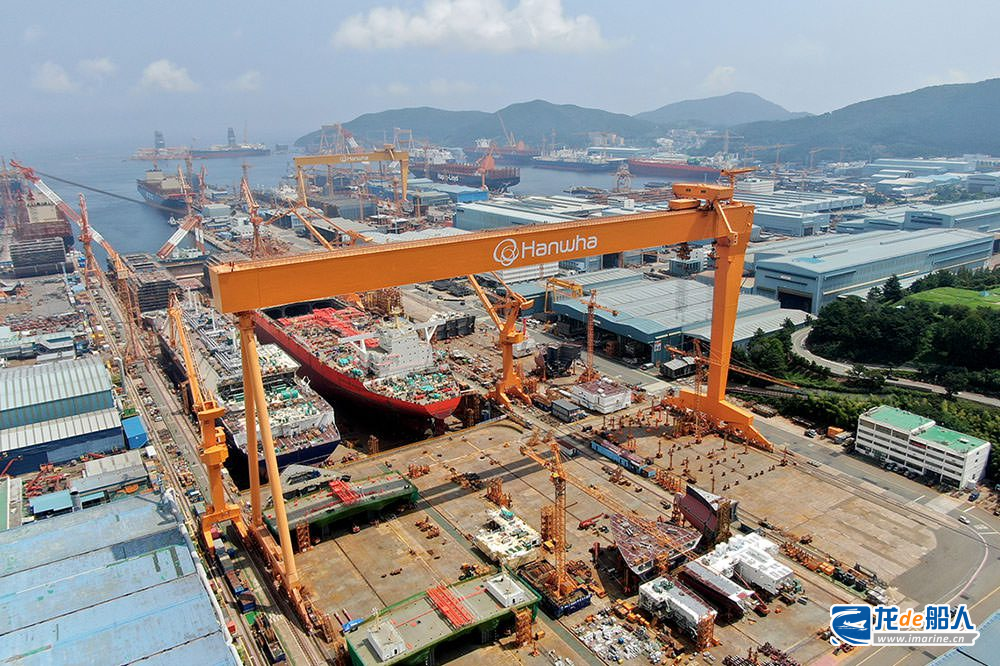Following the Hanwha Philly Shipyard, Hanwha Group is considering the Houston area in Texas as its second production base in the US. Analysts say this move aims to overcome the geographical limitations of the Hanwha Philly Shipyard while enhancing global competitiveness through a diversified production base layout.

Hanwha Group is evaluating the Houston area as a strong candidate for a new production base in the US. Due to the need to expand its LNG carrier construction facilities, Hanwha Group is currently considering several locations in the US.
Hanwha Group is interested in Houston because the region has well-developed port infrastructure and is home to many energy companies. At the same time, Houston has a geographical advantage that compensates for the geographical limitations of the Hanwha Philly shipyard. It also has a high concentration of liquefied natural gas-related equipment and offers advantages in terms of large shipyard construction and labor supply.
According to reports, physical limitations at Hanwha Philly Shipyard have prompted Hanwha Group to seek a new location. Hanwha Philly shipyard has a small dry dock that is not suitable for building large ships. To compensate for this shortcoming, Hanwha Group had considered expanding the riverbank or installing a floating dock, but both options were blocked by various environmental regulations.
The Delaware River shoreline where the Hanwha Philly Shipyard is located has been designated as a Special Protection Area by the Delaware River Basin Commission (DRBC). Therefore, when expanding the shipyard or conducting land reclamation projects, it is necessary to comply with federal regulations such as the Clean Water Act and the National Environmental Policy Act (NEPA).
Another limiting factor for Hanwha Philly Shipyard is its proximity to the airport. As it is located within the aircraft takeoff and landing flight path, it is unable to install high-altitude equipment such as 5,500-ton super-large marine cranes, which limits its expansion potential.
In the future, Hanwha Group plans to compare and evaluate multiple candidate locations, including Houston, before finalizing its investment plan.
Industry insiders say, “Global LNG demand is expected to grow by double digits by 2030. If Hanwha Ocean establishes new production bases in the US, it will help establish a stable order base in the long term.”
In July this year, Hanwha Shipping, a US shipping company affiliated with Hanwha Group, announced that it had placed an order with Hanwha Philly Shipyard for 1+1 174,000-cubic-meter LNG carriers. This will be the first time in 45 years that LNG carriers have been built in the US, with the first ship expected to be delivered in the first half of 2028. Each ship will cost approximately US$250 million, which is comparable to the cost of ships built in Asian shipyards.
When this order was announced, there were some doubts in the industry: “Despite Hanwha Ocean’s technical support, will Hanwha Philly Shipyard be able to deliver the ships on time and within budget?” It is well known that budget overruns and delivery delays are commonplace in US shipbuilding projects.
Hanwha Group’s search for a new site in the US to help build LNG carriers also indicates that building a high-value-added, high-tech LNG carrier in the US will pose significant challenges.
In addition to limitations such as the size of the shipyard and its geographical location, Hanwha Group also faces another problem in building LNG carriers in the US: Hanwha Philly Shipyard is being sued by local workers for allegedly failing to pay wages.
The case involving Hanwha Philly Shipyard was initiated by Irene Rivera, a former employee who worked at the shipyard. The core of the case involves allegations of unpaid wages amounting to at least $5 million involving hundreds of workers.
This is the first large-scale legal dispute involving a South Korean shipbuilder entering the US market. As South Korean shipbuilders increase their investments in the US, such labor risks may also increase.
Hanwha Group Eyes Houston as Second U.S. Production Base to Address Hanwha Philly Shipyard’s Limitations


